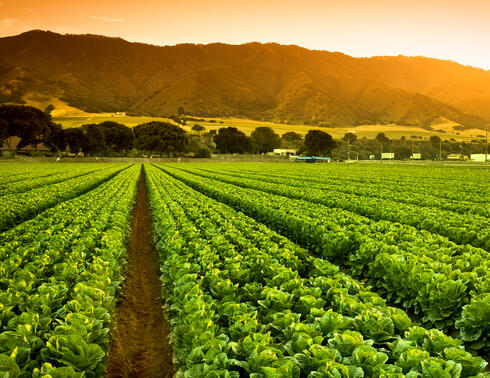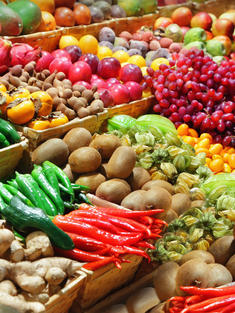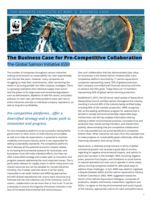The Markets Institute
The Markets Institute at WWF identifies global issues, trends, and tools around some of the most pressing challenges of our time, including the production of food in the 21st century. Our food system is one of the key drivers of biodiversity and habitat loss, and a major contributor to climate change. But changing this system—to benefit both people and planet—is happening far too slowly. There is a lag time between when we identify problems and when we start to see solutions on the ground. Our goal is to increase the speed and scale of solutions to ensure the sustainability of our future food and soft commodities.
To do this, we need to work together, we need to learn more quickly and we need to change faster.
To create the change we need on the ground we convene multi-stakeholder platforms to increase awareness and build consensus about these challenges. Working with partners from the private and public sectors, NGOs, and academic institutions, we strive to explore the science, identify on-the-ground solutions that anticipate issues or reduce impacts, share knowledge, and analyze innovative or industry-wide approaches that can translate into market-based, sector-wide solutions.
Our objective is not to own the solutions, but to share it more broadly and quickly to inform credible, scalable responses through science-based research and encourage the open exchange of ideas and multi-discipline collaboration that help the environment, business, and people.
Each year the Markets Institute identifies the top 15 issues, trends, and tools emerging in the coming year for the food and soft commodities sector. Check out what’s been identified each year.
What We're Incubating
The Next California
California produces more than 1/3 of the vegetables and 2/3 of fruits and nuts that are grown in the United States. But California’s warming climate makes farming there less certain in the future, as it will likely suffer the impacts of climate change and extreme weather events in the future. Every country has a California in its food system—a place we rely on to feed millions of people—and none of them are anticipating the impacts of climate change. We need to explore “The Next Californias” around the world, looking at the viability of shifting some fruit and vegetable production to new to ensure a more climate-resilient food system in the coming decades.
Our first Innovation Analysis on this topic investigated the potential in the mid-Mississippi Delta River region to take on more specialty crop and value added production, equity, and finance models when a system is built from scratch.
Soilless Agriculture
One path toward a more resilient, accessible food system is more distributed capacity, a system in which some nutritious food is produced at scale closer to consumers, with more efficient use of inputs, less waste, and fewer GHG emissions. We are exploring if/when indoor, soilless agriculture can help us get there. Also called controlled environment agriculture (CEA), this growing industry has generated excitement for its potential to decrease conventional agriculture’s pressures on land, biodiversity, natural habitat, and climate. There’s also potential to produce food in or closer to food deserts, use stranded urban assets and infrastructure, and create employment opportunities. However, it faces hurdles in getting to scale.
Our Innovation Analysis examined the various systems and tech that fall under CEA, such as hydroponics, aquaponics, and aeroponics, to get a clear picture of the social, environmental, and economic opportunities, challenges, and possible paths ahead for both people and planet.
Impact Investment & Seaweed Carbon Capture
Around the world, climate change and overfishing are challenging the livelihoods of fishers. Many women in fishing households have turned to seaweed farming to supplement family income. However, the markets and value chains of seaweed are not transparent—resulting in lower prices and less bargaining power for women. What if we can disrupt the market forces that marginalize women seaweed producers by piloting new farming approaches. restructuring business models and seeking alternative markets—including markets for carbon capture and/or sequestration and nitrogen and phosphorus capture—to protect and empower coastal communities? Through increased scale, offshore seaweed farming has the potential to expand carbon sequestration, fight climate change, increase food production, and improve livelihoods for these communities.
Learn more about WWF's foray into impact investment through seaweed farming.
The Markets Institute develops business cases to show how financial and environmental interests align, enabling stakeholders to see how shifting towards sustainable practices can be good for their triple bottom line.
Featured Business Case
The Business Case for Pre-Competitive Collaboration: The Global Salmon Initiative (GSI)
There is a growing realization that individual supply chain actors lack the power to fix large-scale environmental degradation such as deforestation, depletion of wild fish stocks, and plastic pollution on their own, yet these problems pose real risks to entire industries, company reputations, and long-term profitability.
Pre-competitive platforms offer diversified strategies and a faster path to innovation and progress. One such collaboration that has demonstrated clear value for businesses is the Global Salmon Initiative (GSI), a platform representing nearly 50% of global salmon aquaculture production. This is a case study of their challenges, successes, and a case for change at a scale that would not be possible alone.
Engage
Blogs
- How Argentina Could Emerge as a Leader in Mainstreaming Beef Free from Deforestation | Español
- Tackling Scope 3 Emissions and Reaching Net Zero in Dairy
- Why Fewer Product Choices Might be a Good Thing
- The Next California: Introduction
- Investing in US Schools by Reducing Food Waste
- What is the Price of Self-Sufficiency?
- Delivering Solutions: Fresh Produce in the Mail
Media
- US Postal Service Could be Missing Link for Getting Surplus Food from Farms to Families
- Larger US Dairy Farms Could Achieve Net-Zero Emissions within 5 Years
- Indoor Soilless Agriculture Could Supplement US Food Supply While Decreasing Environmental Impact of Food Production
- Mid-Mississippi Delta River Region Potentially a “Next California” of Fruit and Vegetable Production
Join In
- LinkedIn: JasonWClay
- Twitter: @JasonWClay | @WWFInstitute
- Email: [email protected]
- Watch: Markets Institute videos
Keep ahead of the curve.
Subscribe to Markets Institute newsletter to get the trends we're watching weekly:
You can change, edit, or delete your information at any time.







